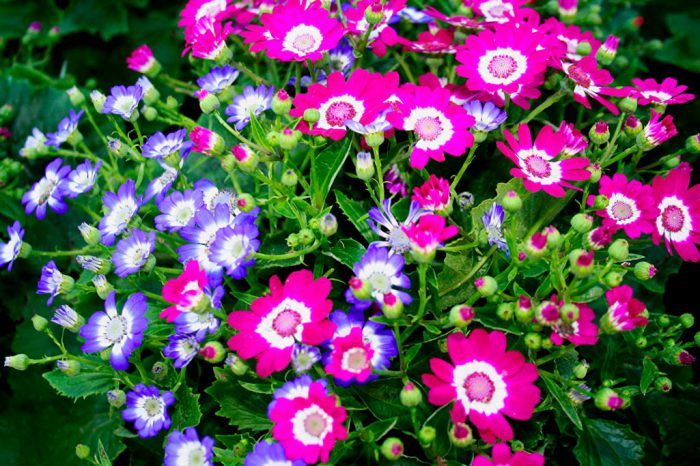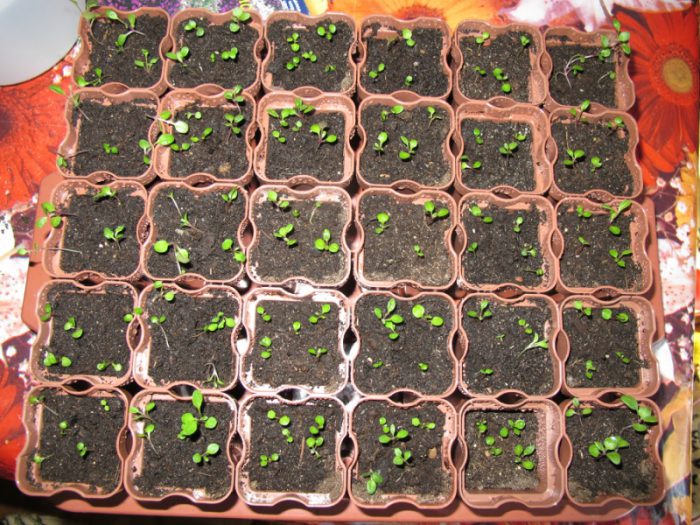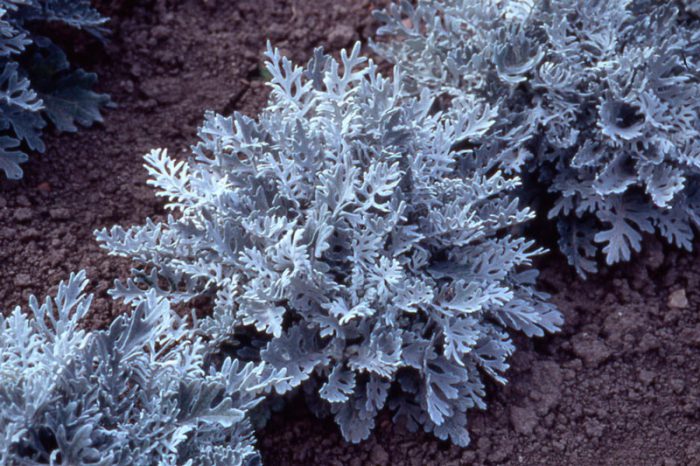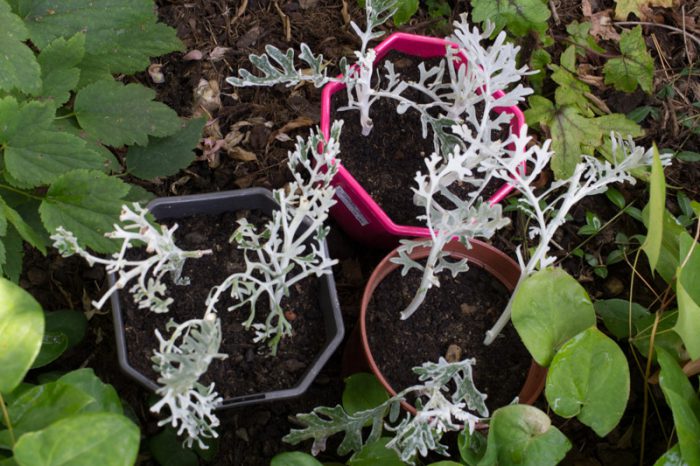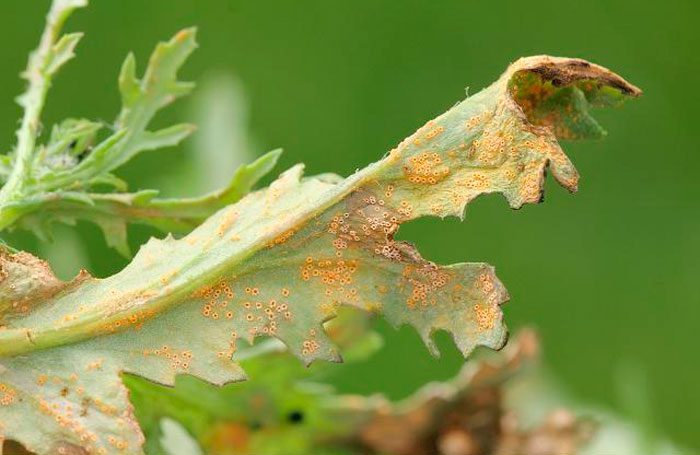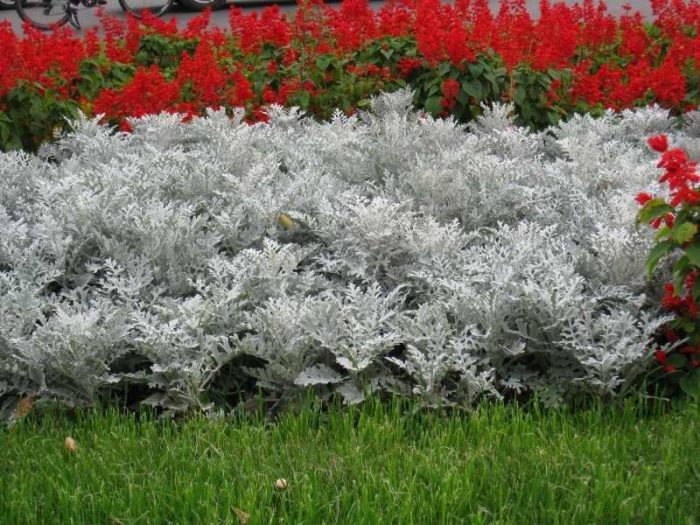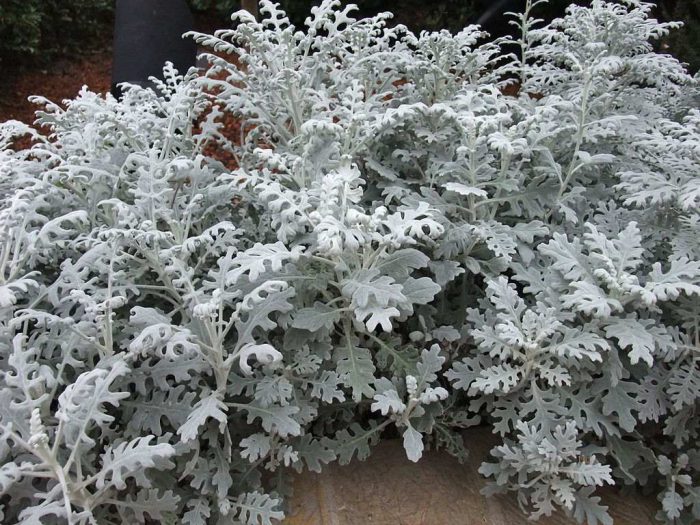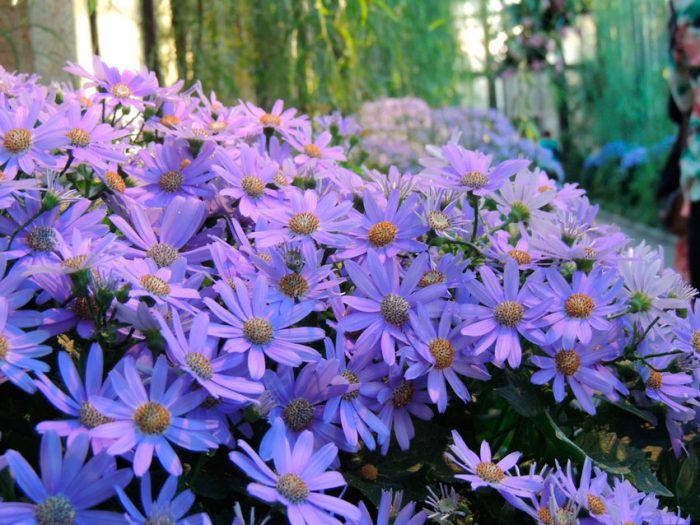Cineraria (Cineraria) is a genus of plants belonging to the family Asteraceae or Asteraceae. Gardeners cultivate both various types of cineraria and species belonging to the closely related cineraria, the genus of crossworts (Senecio), the tribe of cineraria, which are members of the Asteraceae family. The genus cineraria unites about 50 species that are found in nature, while according to various sources, there are 1-3 thousand species of the cineraria. Below we will talk about the types of cineraria and ground plants that are most popular with gardeners.
In Latin, cineraria means "ashy". It is represented by shrubs and herbaceous plants. In the wild, such a flower can only be found in tropical regions of Africa and Madagascar. At home, only bloody cineraria (Cineraria cruenta) is grown, which is also called hybrid cineraria (Cineraria hybrida), but in fact this plant is a hybrid cross. In horticulture, this plant is cultivated as an annual or biennial. The height of the bush with strongly branching shoots is 30–90 centimeters. Large petiolate leaf plates are oval or lyre-shaped; in most species, they are pinnately dissected. There is pubescence on the surface of foliage and shoots. The terminal corymbose inflorescences include double or simple baskets with lingual flowers that have white, purple, red and yellow color. They surround an islet of yellow tubular flowers. Flowering is observed from the second half of June until the first frost.
Content
Growing cineraria from seeds
Sowing
To grow cineraria from seeds, you first need to buy them. This can be done in a flower shop, since such a plant can be found relatively infrequently in gardens. The seeds are very germinating. It is recommended to sow seeds for seedlings in the first days of April. To do this, the container must be filled with peat mixed with sand (1: 1). Sowing is carried out on the surface of the substrate, the seeds are not buried. After sowing, you need to take a ruler from a tree and tamp the surface of the substrate. After that, the seedlings must be watered with a sprayer or using the lower method. Cover the top of the container with transparent glass.
Seedling
The first seedlings usually appear after 1–1.5 weeks. After that, the container must be moved to a place with good lighting. A pick into individual pots is carried out after the plants have 2 true leaves each. During the pick, the plant must be carefully removed along with the earthen lump. It is recommended to use peat briquettes as a container; as a result, there will be several times fewer problems during planting in open soil. With proper care of the seedlings in the garden, you will transplant powerful young plants.
Planting cineraria in open ground
What time to plant
It is not very difficult to cultivate such a flower, especially if you know the basic rules for caring for it. It is recommended to choose a sunny area, but do not forget that such plants need shading at lunchtime. Well-drained soil is suitable, rich in nutrients, neutral or slightly alkaline. Planting grown seedlings can be carried out only after there is no threat of frost at night, as a rule, this falls on mid-May.
How to plant
Planting this plant in open ground is practically no different from planting other plants. The distance between the holes should be 20 to 25 centimeters. The planting is carried out together with an earthen lump. When cineraria is planted, compact the soil and water it. In the event that there is a danger of frost at night, then in the evening the plant should be covered with lutrasil or spunbond, and in the morning - removed.
Care features
It is not difficult to care for this flower, but watering it correctly is very important. With an insufficient amount of water, cineraria becomes weakened, and if there is too much moisture, then rot begins to appear on the root system. It should be remembered that almost all species of this plant are resistant to drought and most often they have enough rain. After the plant is watered or the rain has passed, the surface of the soil must be loosened, while removing the existing weeds. When the flowers begin to wither, they must be cut off, as a result of this cineraria will bloom much longer. Top dressing is carried out 2 or 3 times in 4 weeks and mineral fertilizer is used for this. Ornamental-flowering species need to be fed 1 time in 7 days using alternately mineral and organic fertilizers. If you have a decorative leafy look, then the buds in this case should be torn off as soon as they appear.
Reproduction of cineraria
How to grow a plant from seeds is described above, but only decorative flowering species can be propagated only in this way. Ornamental deciduous species can also be propagated by vegetative methods. Seaside cineraria (Cineraria maritima), for example, can be propagated by ten-centimeter cuttings in the summer. In this case, you will need a "cutter" (portable box), into which the cuttings will be planted. Such a device is necessary so that you can easily remove young plants (cuttings) from the midday direct rays of the sun. To make it, you need boards and plywood. Don't forget to make drainage holes at the bottom. Then a ten-centimeter layer of garden soil mixed with sand is poured, on top is a layer of coarse-grained river sand (5–7 centimeters thick). The surface must be leveled and the substrate must be poured with a watering can with a solution of pink potassium manganese. Treat the cut with a root root at the bottom, then immerse it in the substrate in the "cuttings" and tamp the soil around it a little. After that, the cutting is covered with a cut plastic bottle, slightly sticking it into the sand. It will be possible to remove this shelter only after complete rooting. If necessary, watering the soil over the bottles should be carried out 2 times a day.Rooted plants need to start accustoming to the external environment, for this it is necessary to remove the bottles from them every day for 1-2 hours. After some time, the shelter must be removed for good and it is better to do this when it is cloudy or in the rain. For wintering, cuttings are placed in a cool room, without getting them out of the "cuttings". In spring, they are planted in open soil.
Diseases and pests
Decorative leafy cineraria is susceptible to infection with powdery mildew or rust (with high humidity and heat), and aphids and spider mites can also settle on it. Since these flowers have dense pubescence, it will be easier to prevent infection than to cure the disease. To exterminate pests, systemic insecticidal agents are used. But it should be remembered that all types of this plant are highly resistant to diseases and pests.
After flowering
It was already mentioned above that this very spectacular flowering plant in mid-latitudes is cultivated by gardeners as an annual. In this regard, after it has faded, it is simply destroyed. However, it is quite possible to preserve decorative deciduous species until next year. To do this, they must be prepared for wintering, namely, the bushes of the plant must be covered with a layer of dried leaves. In springtime, it is necessary to remove the foliage, and then cut off the parts that are frozen over from the cineraria, as they can interfere with the growth of young shoots. There is also a second method that will help preserve this plant until spring. In the fall, it should be transplanted into a flower pot, and then transferred to a sufficiently lit cool room. With the onset of next spring, you will only have to transplant this flower into open ground.
Main varieties and species with photos
All types of this plant, which are cultivated by gardeners and florists, are divided into 2 different groups. The first of them is decorative deciduous. Such cineraria, as a rule, are cultivated mostly in open soil. The second group is decorative flowering. Such plants are grown as indoor plants.
Seaside cineraria (cineraria maritima)
It is also called silver cineraria, silver cineraria or seaside cineraria. This decorative leafy plant is perennial. Its root leaf rosette includes leaf plates of an unusual greenish-silver color. This type is very popular in landscape design. The fact is that it is an excellent background for other greenery, as well as for plants with flowers of a very bright, saturated color. Also, this species can also be called "silver dust". The most popular varieties are:
- «Silver Dust"- such compact bushes have a small height and lacy leaf plates.
- «Cirrus"- such a bush has a greater height in comparison with the previous one, and on its lush bushes there are oval serrated leaves.
Cineraria hybrid (Cineraria hybrid)
Which is also called red cineraria, or bloody cineraria - such a bushy plant is decorative and flowering. The bush can be about 30 centimeters high or even more. Large, rounded leaf plates are 10–20 centimeters long. Against the background of lovely foliage, bright flowers stand out, which outwardly resemble chamomiles or daisies. The most popular varieties are:
- Grandiflora - the bush has a height of 50 to 70 centimeters. The flowers are quite large and have a diameter of 5–8 centimeters.
- Double - bushes can be 35–70 centimeters high, flowers have a five centimeter diameter.
- Stellata - The bushes are very tall (70–90 centimeters), and the flowers are 2–4 centimeters in diameter.
- Sympathy - this plant is distinguished by the fact that its flowers can be painted in a variety of combinations of color shades.
Cineraria graceful (Senecio elegans)
The height of the highly branched stem is about 60 centimeters, on its surface there is pubescence in the form of sticky hairs, as well as on the surface of the leaf plates. Flowers can be double or simple. They are part of the baskets, which are part of the corymbose inflorescences. Flowering lasts until the first frost. Popular varieties:
- Nanus - a bush of such a dwarf variety has a height of about 25 centimeters.
- Ligulosus - terry flowers can be painted in a variety of colors.

